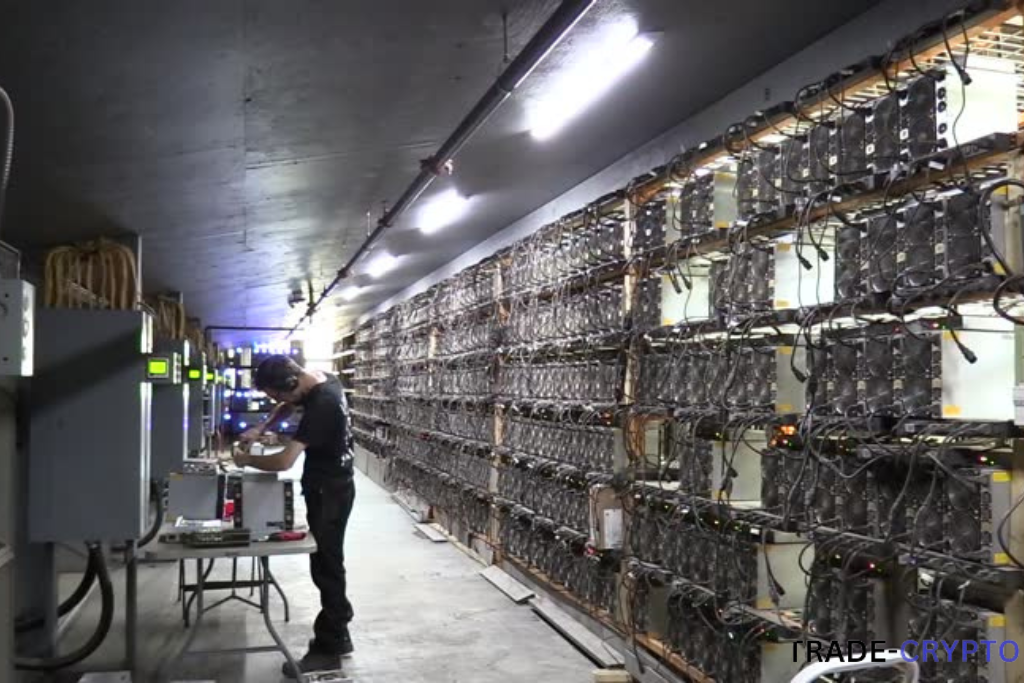What is Bitcoin Mining?
Bitcoin mining is the process of creating new bitcoins by solving extremely complicated math problems that verify transactions in the currency. When a bitcoin is successfully mined, the miner receives a predetermined amount of Bitcoin.
Bitcoin is a cryptocurrency that has gained a wide following due to its wild price swings and surging value since its creation in 2009.
As prices of cryptocurrencies, particularly Bitcoin, have skyrocketed in recent years, interest in Bitcoin mining has also surged. However, the prospects for Bitcoin mining are often challenging due to its complexity and high costs. Below, we explore how Bitcoin mining works and the risks involved.
Bitcoin Mining Statistics
- A miner currently earns 3.125 Bitcoin (about $193,750 as of early October 2024) for successfully validating a new block on the Bitcoin blockchain.
- Creating Bitcoin consumes 166.75 terawatt-hours of electricity each year, more than is used by the Netherlands or the Philippines, according to the Cambridge Bitcoin Electricity Consumption Index.
- Mining a single Bitcoin requires approximately nine years of household-equivalent electricity.
- The price of Bitcoin has fluctuated dramatically. For example, in 2020, it traded as low as $4,107, reaching an all-time high of $73,750 in March 2024. As of October 2024, it traded at around $62,000.
- The odds of a modestly powered solo miner solving a Bitcoin hash were approximately 1 in 26.9 million in January 2023.
- The United States (37.8%), Mainland China (21.1%), and Kazakhstan (13.2%) were the largest Bitcoin miners as of January 2022.
Understanding Bitcoin
Bitcoin is one of the most popular cryptocurrencies, which are digital mediums of exchange that exist solely online. Bitcoin operates on a decentralized computer network or distributed ledger that tracks transactions in the cryptocurrency.
When computers on this network verify and process transactions, new bitcoins are created or mined. These networked computers, or miners, process transactions in exchange for Bitcoin payments.
How Does Bitcoin Mining Work?
To add a block to the blockchain, Bitcoin miners compete to solve complex math problems using expensive computers and significant amounts of electricity.
The process of guessing the correct number (hash) is called proof of work. Miners randomly make as many guesses as possible, requiring immense computing power. The difficulty increases as more miners join the network.
Specialized hardware known as application-specific integrated circuits (ASICs) is used, costing up to $10,000. These devices consume vast amounts of electricity, limiting profitability and drawing criticism from environmental groups.
Successful miners receive 3.125 Bitcoin as a reward. However, this amount is halved approximately every four years or after 210,000 blocks.
Is Bitcoin Mining Profitable?
Profitability depends on factors like upfront equipment costs and ongoing electricity expenses.
Bitcoin mining consumes about 166.75 terawatt-hours of electricity annually, surpassing many countries’ energy use. In some cases, miners earn more by participating in energy-saving programs than from mining itself.
Mining pools allow miners to share resources, reducing individual costs but also lowering potential payouts. The extreme price volatility of Bitcoin further complicates profitability calculations.
How to Start Bitcoin Mining
To start Bitcoin mining, you’ll need the following:
- Wallet: A secure, encrypted account for storing, transferring, and accepting Bitcoin. Wallet providers include Coinbase, Trezor, and Exodus.
- Mining Software: Many free options are available and can be run on Windows or Mac systems.
- Computer Equipment: High-powered computers with significant electricity demands are essential, often costing $10,000 or more.
Risks of Bitcoin Mining
1. Regulation
Few governments fully embrace cryptocurrencies. Many view them skeptically as they operate outside government control. In 2021, China banned Bitcoin mining due to financial risks and speculative trading concerns.
2. Price Volatility
Bitcoin’s price has experienced extreme volatility. For instance, between January 2023 and October 2024, Bitcoin traded between $18,000 and $73,000. This volatility makes it challenging for miners to predict whether their efforts will be profitable.
This article highlights the challenges and intricacies of Bitcoin mining, helping you better understand the process, its rewards, and its risks.
